Mention the ocean, and it is hard not to think of jaws.
The deep waters contain many tooth-lined mouths: the bear-trap maws of
sharks and dolphins, the slack lips of shoaling and reef fish, the baleen-filter gape
of enormous whales. Jawed fish eventually crawled out of the seas millions of
years ago and gave rise to the jawboning vertebrates we are today.
اضافة اعلان
But when did such an evolutionary innovation arise? A pair of
fossil beds discovered in
Southern China suggest that the answer may lie tens
of millions of years deeper into the past than previously thought. The findings
— which include beautifully preserved new species of early fish, the
oldest-known vertebrate teeth and a lot of fish with armor — were published in
September across four papers in Nature.
 From top right going clockwise: Shenacanthus vermiformis,
Xiushanosteus mirabilis, Tujiaaspis vividus, Qianodus duplicis, and
Fanjingshania renovata, five newly discovered jawed fishes.
From top right going clockwise: Shenacanthus vermiformis,
Xiushanosteus mirabilis, Tujiaaspis vividus, Qianodus duplicis, and
Fanjingshania renovata, five newly discovered jawed fishes.
“This is a step change in where we’re thinking about these
events in the chronology of vertebrate evolution,” said Matt Friedman, a
paleontologist at the
University of Michigan who was not involved in the
research but wrote a perspective article that accompanied the Nature papers.
Jawed fish explode into the fossil record 419–359 million years
ago during a period known as the age of fish, or the Devonian. Fish of this era
all have “their identities clearly written on their bodies,” said Michael
Coates, a paleobiologist at the University of Chicago who was not involved in
the new papers. They include ancient groups like jawless fish, lineages of
early jawed fish called placoderms, ascendant newcomers like cartilaginous and
bony fish, and the first fishes to hop onto land.
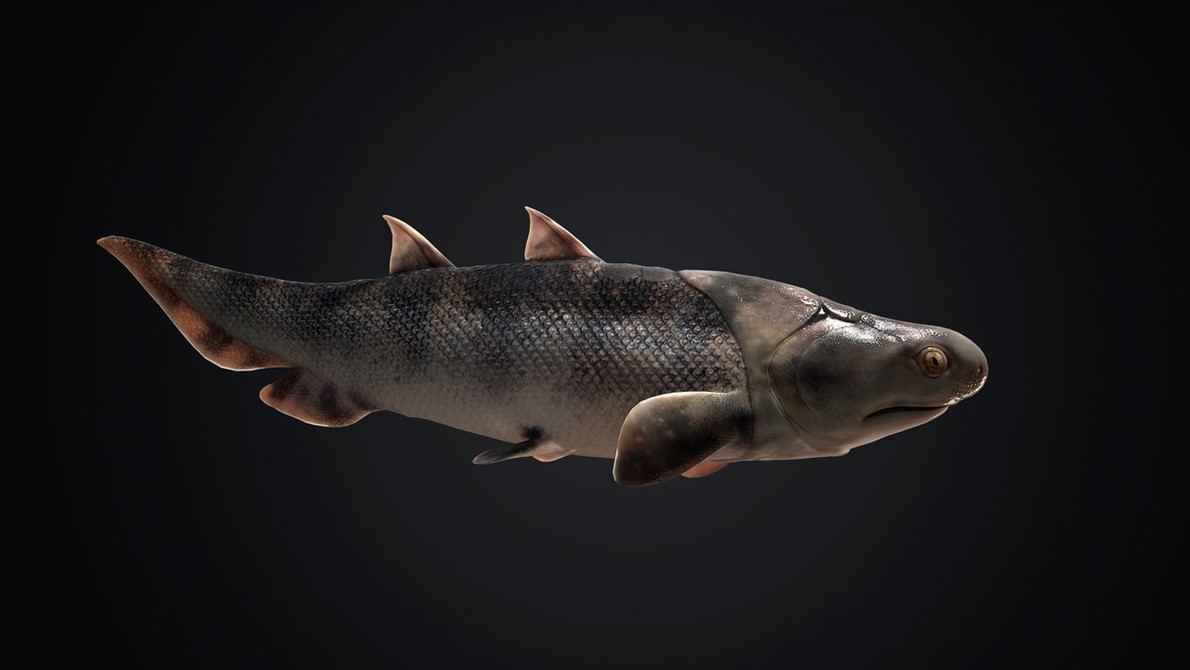 A Shenacanthus vermiformis, a cartilaginous
fish related to sharks and rays.
A Shenacanthus vermiformis, a cartilaginous
fish related to sharks and rays.
This sudden diversity of jawed fish — also called gnathostomes —
has long led scientists to suspect that their origins must lie deeper in the
fossil record, a period known as the Silurian, said Per Ahlberg, a
paleontologist at
Uppsala University in Sweden and an author on one of the
papers. But until recently, the number of useful Silurian gnathostome fossils
could be counted on one hand.
A decade ago, researchers set out to systematically survey the
425-million-year-old rocks of the late Silurian period in China, said Gai
Zhikun, a paleontologist at the Chinese Academy of Sciences and an author on
one of the papers. They were rewarded with complete fossils of early jawed
fish.
Encouraged, they delved into older rocks. In 2020 these fishing
expeditions got a bite: a pair of deposits outside of Chongqing.
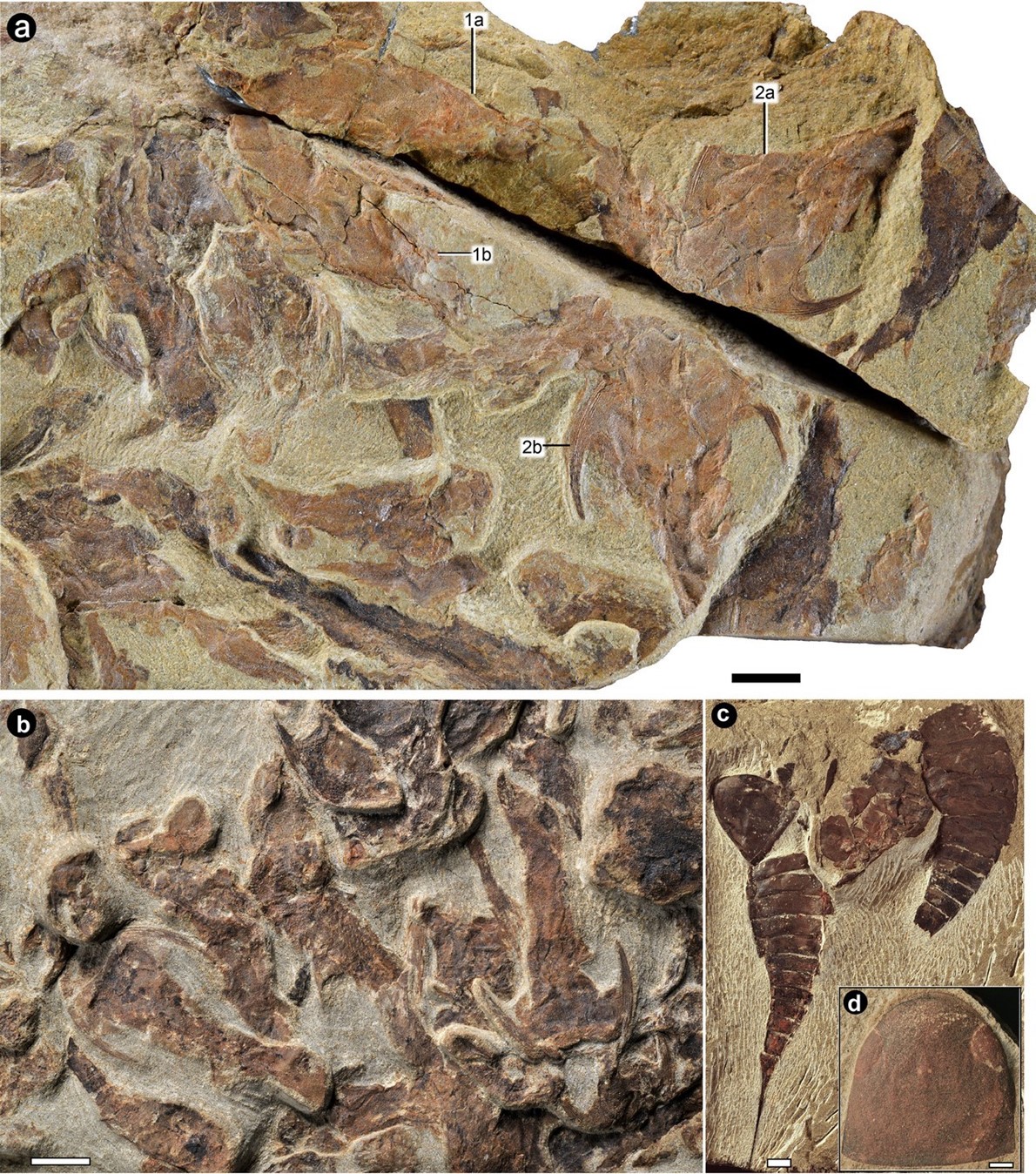 Fish fossils from a Chongqing fossil deposit.
Fish fossils from a Chongqing fossil deposit.
The two fossil beds are separated by a few million years in
time, each with a different complement of species.
The 436-million-year-old bed contains “little fishtank-sized
fishes”, Ahlberg said, only a few centimeters long, which represent the
oldest-known complete jawed fish. Most are of a flat, armored placoderm species
named Xiushanosteus mirabilis, which most likely lived on the seafloor. Also
present is Shenacanthus vermiformis, a cartilaginous fish related to sharks and
rays, but with armor plates resembling those of unrelated placoderms — a find
that suggests early sharklike species retained the armor-plates present in
earlier branches of the fish family tree.
Philip Donoghue, a paleontologist at the University of Bristol
and an author of one of the papers, says the most remarkable specimen from the
site is a jawless fish called Tujiaaspis vividus. Thousands of head shields
from the species’ family are known from the fossil record, but Tujiaaspis
preserves the first known body. It comes with a surprise: a set of paired fins
jutting out from the skull, which Donoghue and his colleagues suggest is a
likely precursor of the pectoral and pelvic fins found in gnathostomes, which
for fish that moved onto land gave rise to arms and legs. Previously,
researchers believed the two sets of fins evolved separately between jawless
and jawed fish.
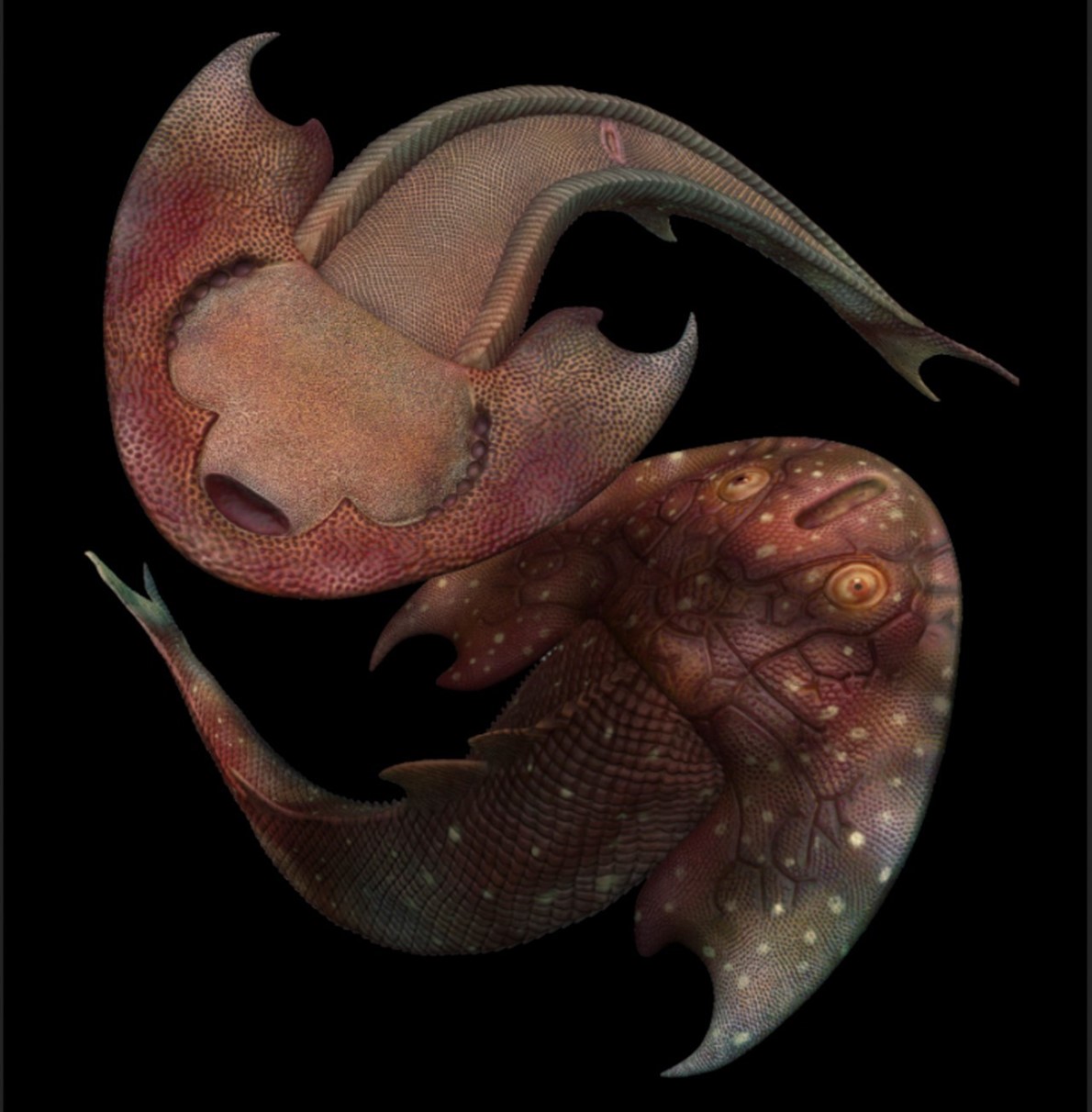 A Tujiaaspis vividus, a newly discovered jawed
fish.
A Tujiaaspis vividus, a newly discovered jawed
fish.
“It overturns conventional wisdom on how paired appendages
originated,” Donoghue said.
The second site, at 439 million years old, preserved more
important fossils. One paper describes a collection of spines, scales, and
head-plates from an animal named Fanjingshania renovata, all of them
dead-ringers for later examples of cartilaginous fish. Another records a whirl
of connected teeth — the oldest yet known from a vertebrate — from a fish named
Qianodus duplicis. Both animals belong firmly to the branch of jawed fish
called the chondrichthyans, the group of cartilaginous fish that include modern
sharks, rays, and ratfish. (Bony fish like salmon and humans are the other
branch.)
The presence of shark relatives at the site suggests that the
split between cartilaginous and bony fish had already occurred by the early
Silurian, Friedman said. Taken together, both sites push the origin of
vertebrate jaws and teeth back by almost 14 million years.
“It’s a big shift from the consensus chronology,” Friedman said,
which will force a drastic reconsideration of early marine ecosystems.
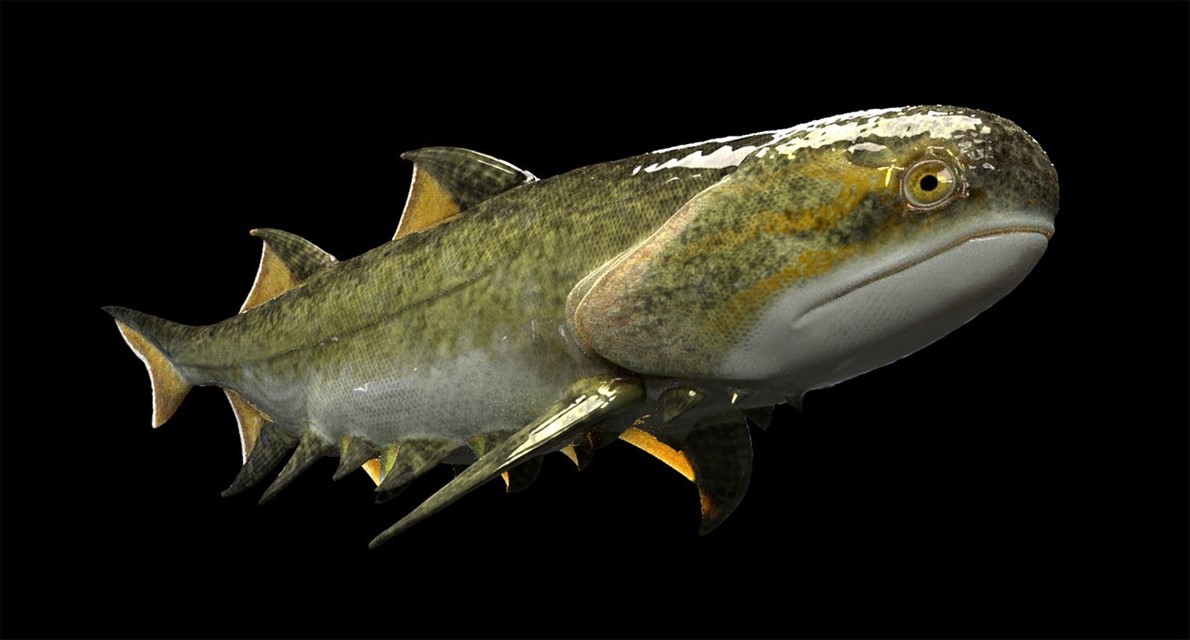 A Fanjingshania renovata, a newly discovered
jawed fish.
A Fanjingshania renovata, a newly discovered
jawed fish.
Jawed fish now seem to have originated as early as the Great
Ordovician Biodiversification, a period around 485 million to 445 million years
ago when marine invertebrates ruled. The few known fish from that period are
jawless and generally unprepossessing, Coates said. “They look like
armor-plated tadpoles,” he said. “So the last thing you’d expect is for
proto-sharks and proto-bony fish to be swanning around at the same time.”
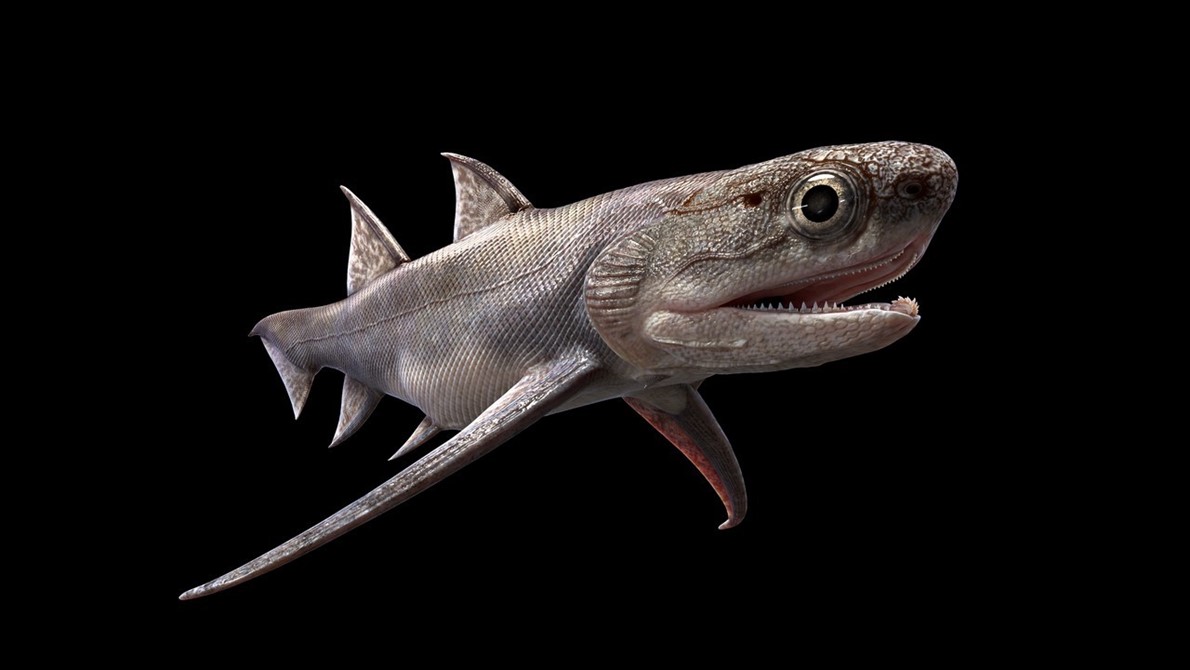 A Qianodus duplicis, a newly discovered jawed fish. The
Qianodus duplicis, related to present-day sharks, rays, and ratfish, had
connected teeth — the oldest yet known example in a vertebrate.
A Qianodus duplicis, a newly discovered jawed fish. The
Qianodus duplicis, related to present-day sharks, rays, and ratfish, had
connected teeth — the oldest yet known example in a vertebrate.
As paleontologists continue to dig deeper into early Silurian
rocks in China, they’ve uncovered even more fish species. When it comes to the
earliest jawed fish, researchers may soon find that they’ll need a bigger boat.
“It’s highly likely that there will be more discoveries,”
Ahlberg said. “It’s an overused phrase, but I mean it: This promises to
completely revolutionize our understanding of the earliest phase of jawed
vertebrate evolution.”
Read more Odd and Bizarre
Jordan News



